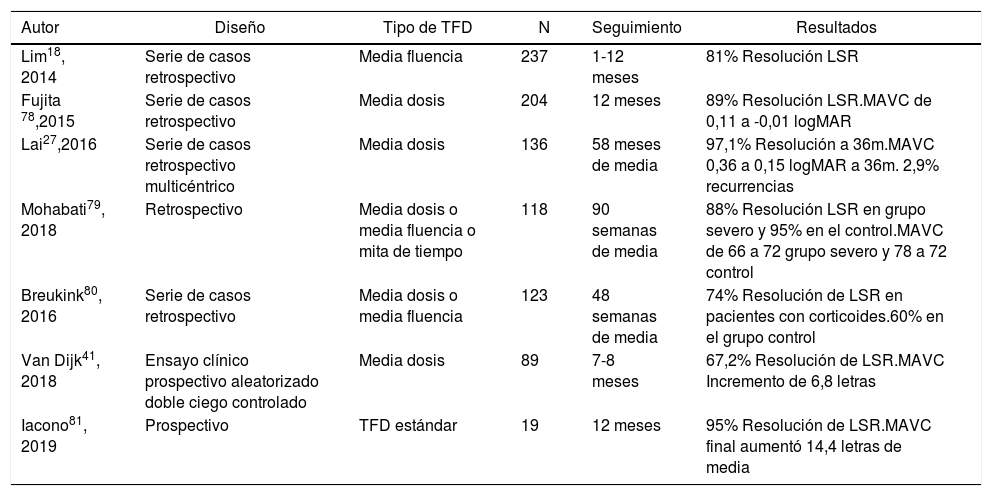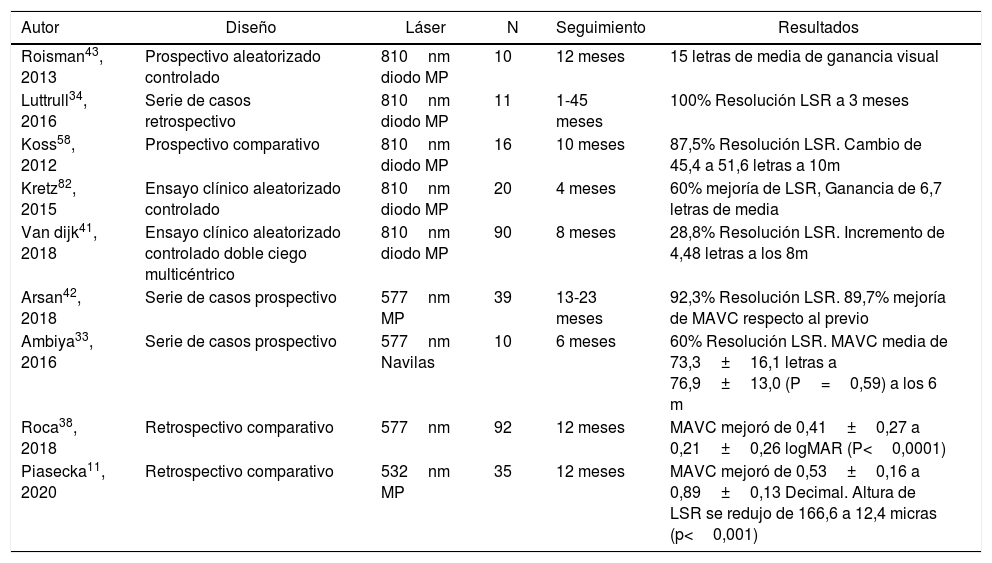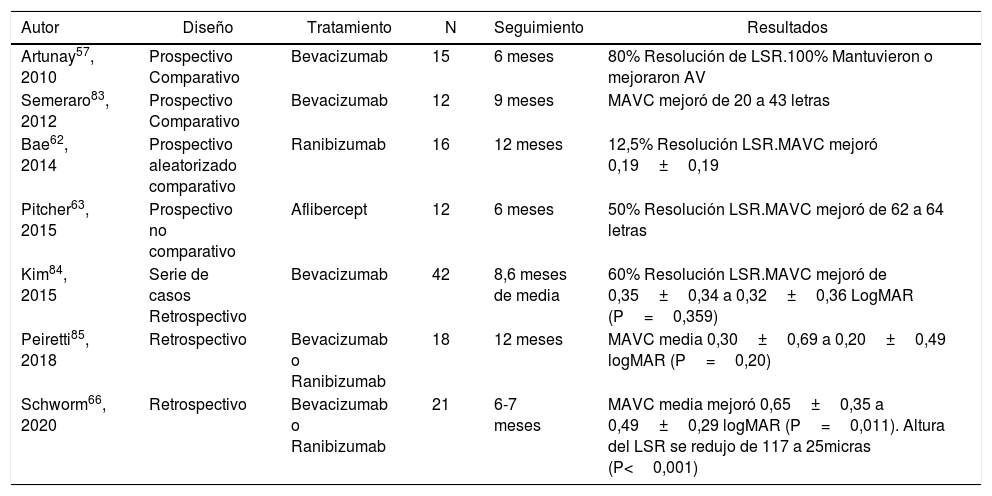La coriorretinopatía serosa central (CSC) es una de las principales causas de disminución de la agudeza visual en pacientes menores de 60 años. Su fisiopatología sigue siendo parcialmente desconocida, aunque se ha postulado una hiperpermeabilidad coroidea que produce típicamente un desprendimiento neurosensorial y/o un desprendimiento del epitelio pigmentario de la retina en el polo posterior. La CSC aguda generalmente no requiere tratamiento, mientras que cuando es crónica debe ser tratada para evitar un deterioro visual. Con el desarrollo de las nuevas técnicas de imagen ha existido una mejora en el diagnóstico y se han propuesto diferentes estrategias terapéuticas. Actualmente diversos tratamientos para el manejo de la CSC crónica han demostrado ser útiles para mejorar o estabilizar la agudeza visual, la resolución del fluido subretiniano y para prevenir recurrencias. Los tratamientos más empleados en la actualidad son la terapia fotodinámica con verteporfina, el láser subumbral de micropulso, el tratamiento con antagonistas de los mineralocorticoides o los fármacos intravítreos antiangiogénicos. Pero existen otras propuestas y, además, se están desarrollando nuevos tratamientos con resultados prometedores. Esta revisión pretende ofrecer al lector una visión global de la evidencia científica actual de las diferentes opciones de tratamientos disponibles para la CSC para ayudar en la toma de decisiones en la práctica clínica.
Central serous chorioretinopathy (CSC) is one of the main causes of impaired visual acuity in patients younger than 60 years. Its pathophysiology remains partially unknown, although it has been postulated that choroidal hyper-permeability may be involved. This typically produces a neurosensory retinal detachment and/or a detachment of the retinal pigment epithelium in the posterior pole. Although acute CSC generally does not require treatment, when chronic it must be treated to avoid visual impairment. With the development of new imaging techniques, there has been an improvement in diagnosis, and different therapeutic strategies have been proposed. Various treatments for the management of chronic CSC have currently been shown to be useful to improve or stabilise visual acuity, the resolution of subretinal fluid, and to prevent recurrences. The most commonly used treatments today are photodynamic therapy, micropulse subthreshold laser, mineralocorticoid antagonists, or anti-vascular endothelial growth factor drugs. There are also other proposals and new treatments being developed, with promising results. This review aims to provide the reader with an overview of the current scientific evidence of the different treatment options available for CSC in order to help decision-making in clinical practice.













